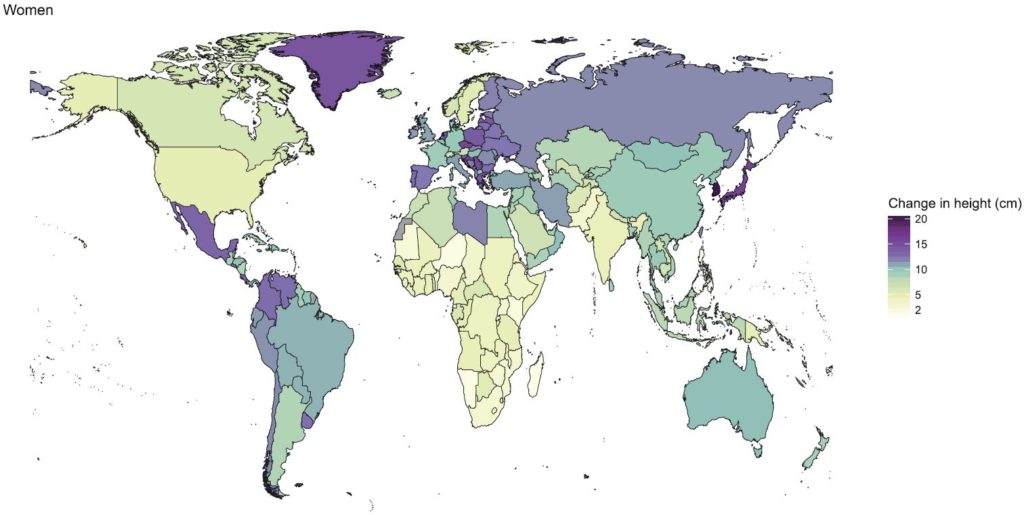An exciting research study titled ‘A century of trends in adult human height’ recently came out.
The study re-analysed a staggering 1,472 population-based studies, with measurement of height of more than 18.6 million participants to estimate the mean height for people born between 1896 and 1996 in 200 countries.
A summary of the study results are presented below.
People born in 1896
- Shortest people lived in Asia and in Central and Andeadn Latin America:
- The shortest men lived in Laos with an average height of only 152.9 cm.
- The shortest women lived in Guatemala with an average height of 140.3 cm.
- Tallest people lived in Central and Northern Europe, North America and some Pacific Islands:
- Men on average measured 171 cm in Sweden, Norway and USA.
- Women were on average were 160.3 cm tall in Sweden, Norway, Iceland and USA.
People born in 1996
Changes in adult height over the century of analysis varied drastically across countries.
- Shortest people live in Asia and in Central and Andeadn Latin America:
- The shortest men live in Timor-Leste, Yemen and Laos, where the average height is 160 cm.
- The shortest women live in Guatemala with an average height of 149.4 cm.
- The next shortest women live in the Philippines, Bangladesh and Nepal where average height is below 151 cm.
- Tallest people live in Europe:
- The tallest men live in the Netherlands, Belgium, Estonia, Latvia and Denmark, with Dutch men at 182.5 cm, the tallest on the planet.
- The tallest women live in Latvia, the Netherlands, Estonia and Czech Republic, with average height surpassing 168 cm.
Comparison of heights between men and women
- Men were taller than women in every country, on average by 11 cm in the 1986 birth cohort and by approximately 12 cm in the 1996 birth cohort.
- In the 1986 birth cohort, the male-female height gap in countries where the average height was low was slightly larger than in taller nations.
Changes in adult height between the 1896 and 1996 birth cohorts
The largest gain in adult height over the past century occurred in:
- South Korea for women who became 20.2 cm taller.
- Iran for men who became 16.5 cm taller.
The maps below show the changes in adult height between the 1896 and 1996 birth cohorts:
Discussion of results
Over the past century adult height has changed substantially and unevenly in the world’s countries, with no indication of convergence. The height differential between the tallest and shortest populations was 19 cm for men and 20 cm for women a century ago, and has remained about the same now. It’s believed that cross-population differences are related to non-genetic, environmental factors. Of these, fetal growth (related to maternal size, nutrition and environmental exposures), and nutrition and infections during childhood and adolescence are particularly important determinants of height during adulthood.
There is a need to better understand why height has changed in different countries by different amounts, and use that information to improve nutrition and health across the world. It would also be valuable to understand how much becoming taller has been responsible for improved health and longevity throughout the world.
What are your thoughts about all these results?
Stand tall and be proud.
- Image credit for different heights (cover image): here



